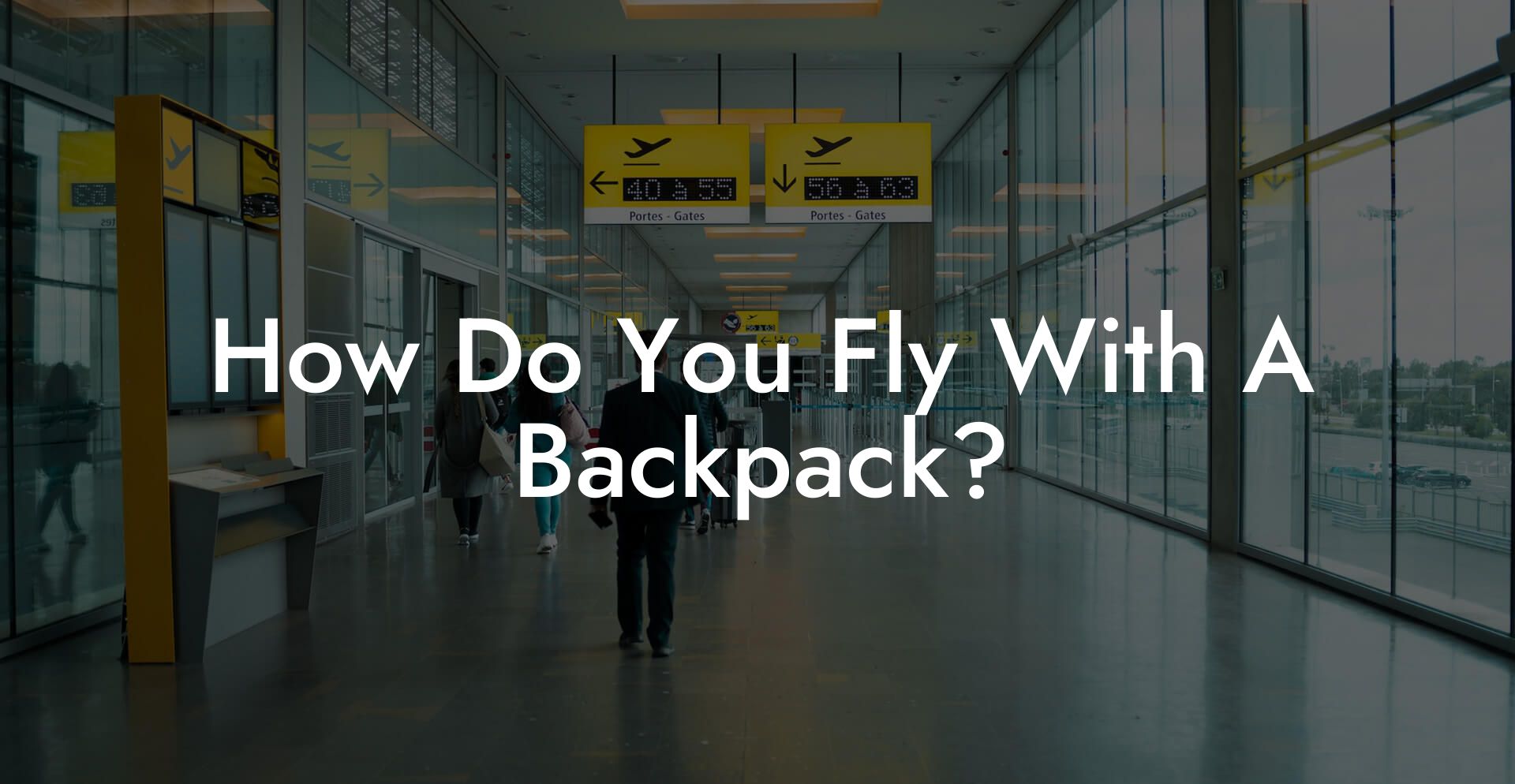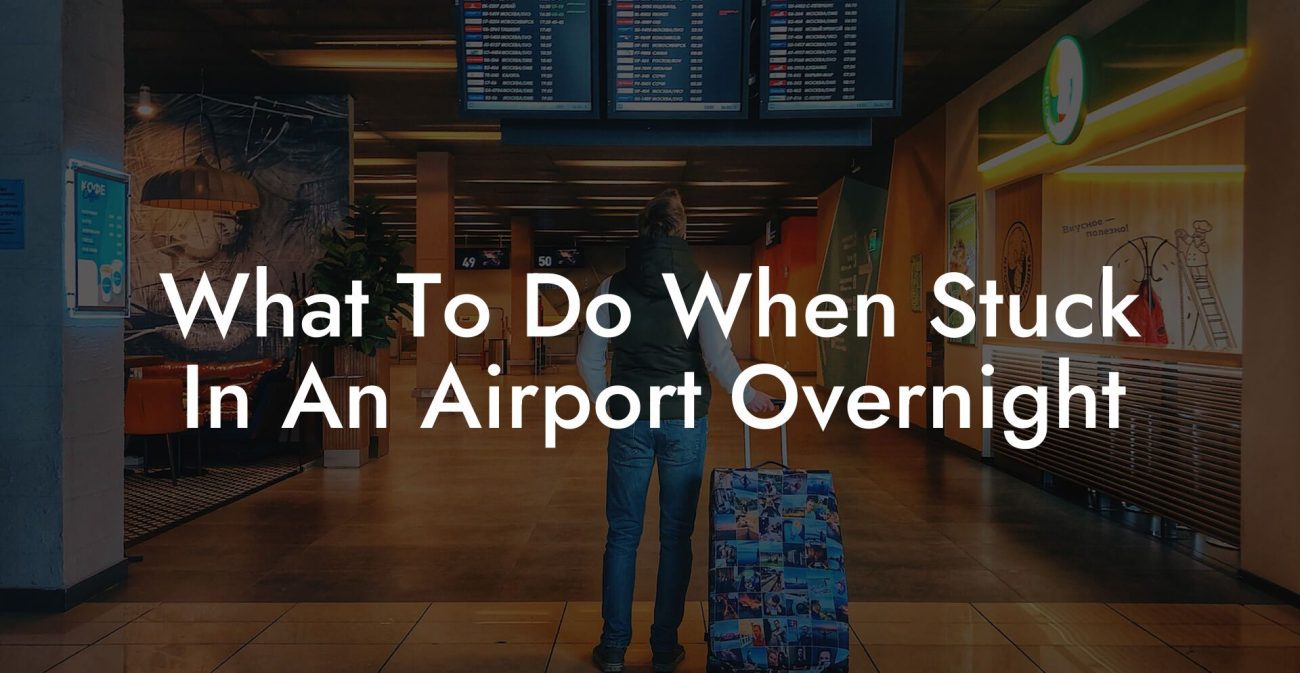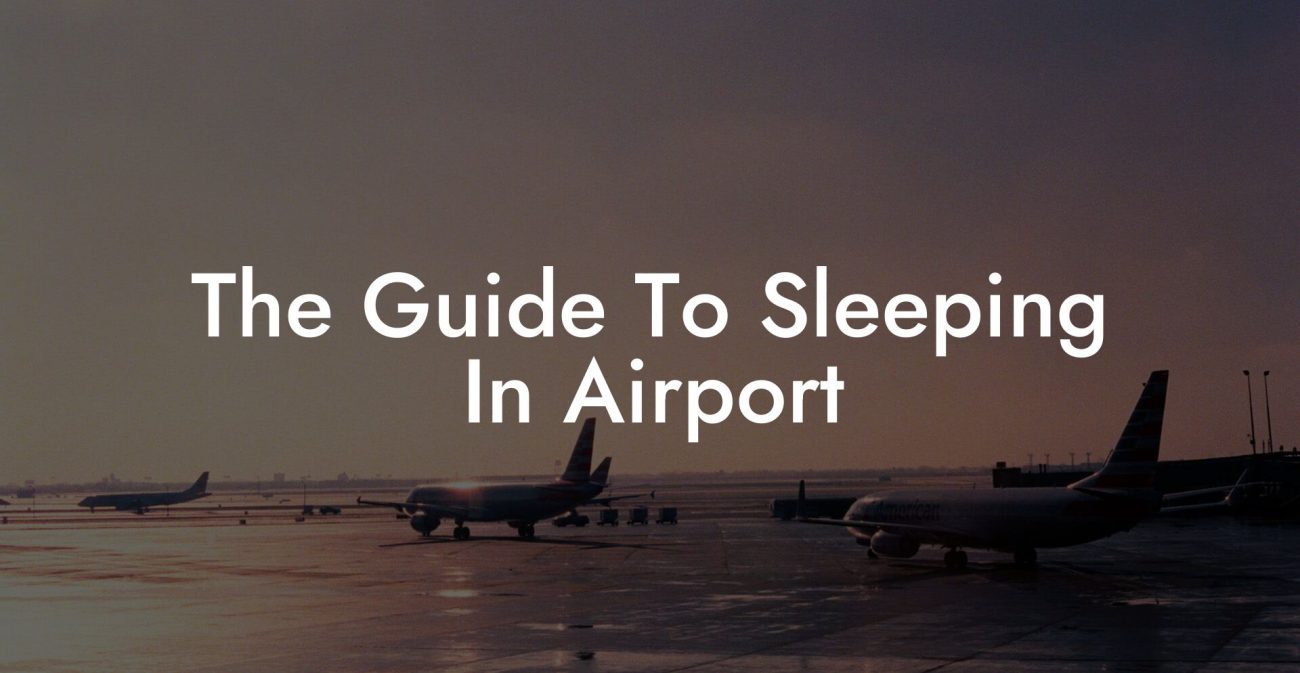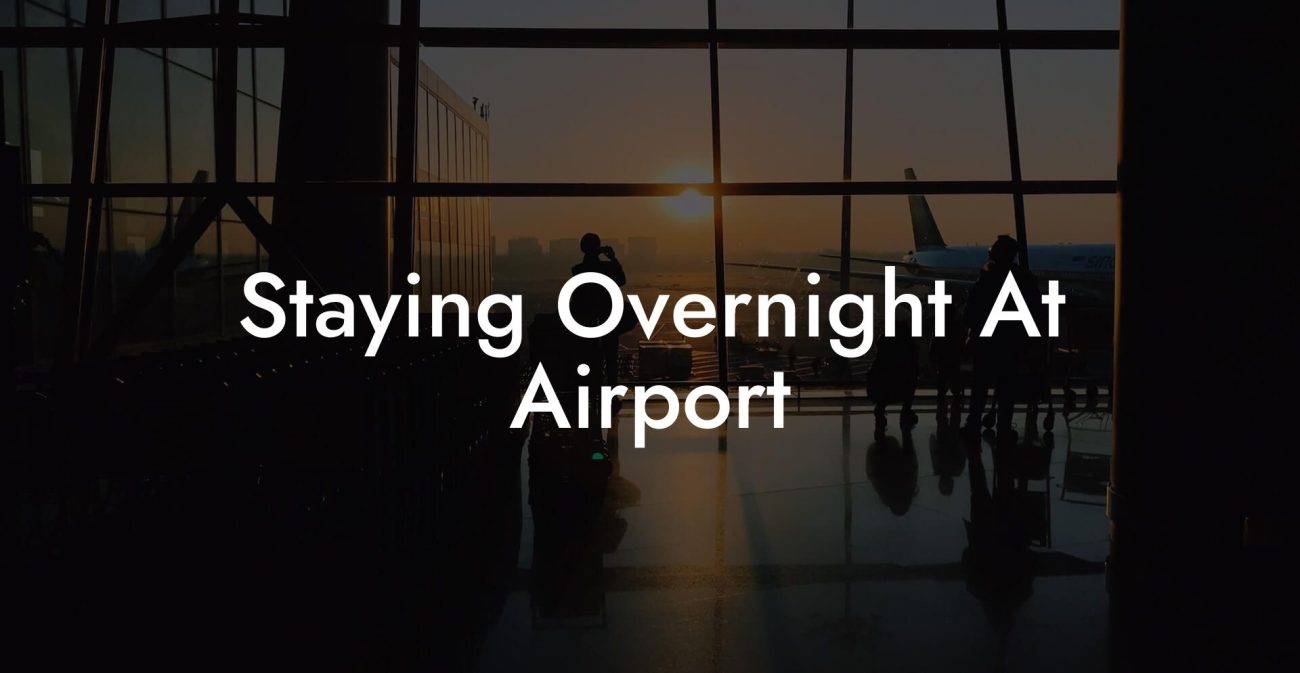Buckle up (or rather, strap on your backpack) because flying solo with just a backpack is a whole vibe. If you’ve ever wondered how to transform the chaos of airport security, the anxiety of boarding, and the quest for a decent nap into an art form, you’re in the right place. This ultimate guide breaks down every twist and turn of jet-setting with your backpack, while dishing out insider tips on sleeping in airports and even scoring one of those elusive airport sleeping pods. Let’s dive into the nitty-gritty of flying with a backpack, baby!
Quick Links to Useful Sections
- The Allure of Backpack Flying
- Pre-Flight Prep: Packing Smart and Traveling Light
- 1. Choose the Right Backpack
- 2. Embrace Minimalism
- 3. Tech Essentials and Gadgetry
- 4. Smart Organization
- Navigating the Airport Jungle
- Mastering Security Checkpoints
- Boarding and Legroom: Making the Most of Tight Spaces
- Handling Layovers Like a Boss
- Sleeping in Airports and Finding the Perfect Sleeping Pod
- What Are Airport Sleeping Pods?
- Tips for Nailing the Airport sleep Game
- Air Travel Etiquette for the Backpack Traveler
- Be Courteous and Compact
- Keep Your Tech Tidy
- Respect Shared Spaces
- Airline and Airport Policies: What to Know Before You Fly
- Carry-On Regulations
- Security and Prohibited Items
- Sleeper’s Paradise: Airport Sleeping Pods and Lounges
- Maximizing Comfort: Backpack Travel Hacks for a Smooth Flight
- Upgrade Your Comfort Kit
- Stay Hydrated and Snack Smart
- Tech to the Rescue
- Stay Active and Stretch
- The Backpack Lifestyle: Embracing Spontaneity and Freedom
- Resources and Community Support: Your Next Steps
- Planning Your Ultimate Backpack Flight Itinerary
- Start with a Vision
- Budget Wisely
- Leverage Travel Apps and Tech
- Stay Adaptable
- Advanced Tips: How to Handle Emergencies and Stay Secure
- Protecting Your Valuables
- Stay Informed
- Tech-Enabled Security
- From Takeoff to Touchdown: Embracing Your Unique Travel Narrative
- FAQs on Flying with a Backpack, Airport Sleeping, and More
- Your Next Adventure Awaits: Take Flight with Confidence and Style
The Allure of Backpack Flying
For the modern wanderer, backpack travel isn’t just about carrying your gear—it’s a lifestyle. Think endless adventure, spontaneous detours, and nights where your only hotel is an airport lounge (or, if you’re really daring, a sleeping pod). Millennials and Gen-Z travelers are rewriting the rules of travel with minimalist packing strategies and an appetite for authentic experiences. Whether you’re an urban explorer or a nature junkie, here’s why flying with a backpack is your ticket to unfettered freedom.
Carrying your essentials in one trusty backpack means you’re always ready for the unexpected. One minute you’re boarding a red-eye flight with premium coffee waiting to be sipped, and the next, you’re lounging in an avant-garde airport sleeping pod that feels like a cross between a chic capsule hotel and a high-tech nap station. It’s all about embracing the adventure.
And let’s be real: the picture-perfect Instagram story is all about that seamless blend of wanderlust and practicality. With a backpack by your side, you’re not weighed down by excess baggage or the stress of lost luggage. Instead, you navigate the airport mazes and city streets with the ease of a seasoned nomad, ready to snap your next selfie in front of a locally celebrated mural or a quirky travel café.
Pre-Flight Prep: Packing Smart and Traveling Light
The secret to rocking flight after flight with just a backpack? It all starts with a strategic packing plan. Think of your backpack as your portable command center—every item must earn its spot. Here’s how to ensure your travel companion (a.k.a. your bag) is an asset, not a liability.
1. Choose the Right Backpack
Not all backpacks are created equal. Whether you’re exploring bustling urban jungles or hopping on international flights, opt for a versatile design that balances style with functionality. Look for features like padded straps, multiple compartments, and RFID-blocking pockets to secure your passport and electronic gadgets. Style matters too; you want a bag that not only performs but also pops in your Instagram feed.
2. Embrace Minimalism
Minimalism is the mantra when it comes to backpack travel. Ditch the urge to pack “just in case” items. Instead, opt for multi-use clothing, compact tech gadgets, and travel-sized toiletries. Layering is your best friend; a lightweight jacket can save you from unpredictable weather without occupying too much space.
3. Tech Essentials and Gadgetry
In the age of digital nomads, your backpack needs a tech upgrade. A reliable power bank, noise-cancelling headphones, and a portable Wi-Fi hotspot can transform a tedious layover into a productive, even enjoyable, getaway. And don’t forget a universal adapter that works across different regions—you don’t want to be left without a charge when you most need it.
4. Smart Organization
Invest in quality packing cubes and zip-lock bags. Organizing your items into dedicated compartments not only saves time at security checkpoints but also minimizes the risk of losing small, valuable items. Keep important documents, medications, and a change of clothes in a separate, easily accessible mini-bag.
With these pre-flight packing tips, you’re not just flying with a backpack—you’re flying with a well-oiled, minimalist machine designed to keep up with your wanderlust.
Navigating the Airport Jungle
Airports can feel like labyrinths designed to test your patience and sense of direction. But when you’re traveling with a backpack, every step—from check-in to the gate—is an opportunity to showcase your savvy traveler status. Here’s how to navigate the airport scene like a pro.
Mastering Security Checkpoints
Security lines are often the bane of every traveler’s existence. When you’re armed with just a backpack, the key is to be prepared:
- Have your boarding pass, passport, and ID ready. Keep them in a dedicated travel wallet so you won’t have to rummage through your backpack.
- Pack liquids in a clear, resealable bag and easily accessible location as per TSA regulations.
- Slip on shoes that are easy to remove and comfortable enough to endure long waits.
With these strategies, you’ll glide through security like the secret agent of travel that you are—cool, calm, and collected.
Boarding and Legroom: Making the Most of Tight Spaces
Let’s face it: cramped airplane seats are no paradise. But flying with just a backpack means you avoid the dreaded baggage carousel and the anxiety of lost luggage. Use your freed-up space to your advantage—stretch out, organize your essentials within the cabin, and even charm your seat neighbor with your travel stories!
Handling Layovers Like a Boss
Layovers don’t have to be a drag. They’re the perfect chance to explore duty-free boutiques, sample local cuisine, or even take a power nap in one of those trendy airport sleeping pods. Efficiency is the name of the game; plan your layover route ahead of time and check the airport’s amenities to make the most of your stopover.
Remember, a smooth airport experience is built on forward planning and a healthy dose of chill vibes.
Sleeping in Airports and Finding the Perfect Sleeping Pod
Ah, the notorious airport nap—a little slice of serenity amidst the chaos of travel. For many backpack travelers, catching some Z’s in transit isn’t a luxury; it’s a necessity. Whether you’re dozing off in a quiet corner or booking a state-of-the-art airport sleeping pod, here’s your survival guide for airport snoozing.
What Are Airport Sleeping Pods?
Airport sleeping pods are modern-day havens offering privacy, comfort, and the convenience of a dedicated snooze space within the terminal. These pods typically come equipped with a comfortable bed, charging ports, and sometimes even a mini entertainment system. They’re perfect for travelers seeking a few hours of uninterrupted rest during long layovers.
Tips for Nailing the Airport sleep Game
Scoring quality sleep in an airport is as much an art as it is a science. Here are some pro tips:
- Scout Ahead: Many airports now offer sleeping pods or designated quiet zones. A quick search through the airport’s website or a travel app can reveal your best nap spots.
- Noise-Canceling Gear: Invest in a solid pair of noise-cancelling headphones or earplugs to block out background chatter and the hum of airport activity.
- Travel Pillow & Blanket: Even if the pod or lounge provides them, having your own travel pillow and a lightweight blanket can guarantee maximum comfort.
- Set Your Alarm: Don’t let the tranquility lull you into a missed flight. Set a couple of alarms on your phone to ensure you wake up with plenty of time to spare.
For those who prefer not to splurge on a sleeping pod, look for unofficial nooks in the terminal—quiet corners, underutilized benches, or secluded areas near the gates can sometimes serve as impromptu nap spots.
With these hacks, you’ll master the art of airport napping and wake up refreshed, ready to conquer the next leg of your journey.
Air Travel Etiquette for the Backpack Traveler
When you’re the resident backpack traveler, you’re not just representing yourself—you’re setting a trend. The modern globetrotter knows that a little courtesy goes a long way. Here are key etiquette tips to ensure that you leave a positive mark on every flight and terminal.
Be Courteous and Compact
Your backpack is designed for mobility and efficiency, so keep it compact in tight spaces. Whether you’re navigating through narrow airplane aisles or squeezing into a crowded café at the airport, ensure your bag is positioned in a way that doesn’t encroach on fellow travelers’ space.
Keep Your Tech Tidy
Avoid hogging overhead compartments or sitting on your bag. Organize your tech gear in an orderly fashion so that you aren’t scrambling to find your charger when the in-flight movie is about to start. A neat and tidy backpack reflects a neat and tidy mind.
Respect Shared Spaces
When it’s time to catch some shut-eye, whether in a designated sleeping pod or a cozy corner, be mindful of noise levels and the use of shared amenities. A simple courtesy—like lowering your voice or using a soft blanket—can keep the travel community chill and cooperative.
With these etiquette tips, you’ll be known not only as the stylish backpack traveler but also as a considerate globetrotter who makes every journey a more pleasant experience.
Airline and Airport Policies: What to Know Before You Fly
While your backpack is your trusty sidekick, it’s important to know the rules of the road (or rather, the skies). Different airlines have varying policies on carry-on sizes, weight limits, and sleeping accommodations. Being informed is key to a smooth travel experience.
Carry-On Regulations
Most airlines allow a personal item plus a carry-on bag, but dimensions and weight can differ. Before you fly, check your airline’s guidelines to ensure your backpack qualifies as a carry-on. This saves you from unexpected fees or last-minute repacking in the terminal.
Security and Prohibited Items
Review TSA and international security guidelines carefully. Avoid packing liquids over the accepted limit, and always have your gadgets and important documents at the top of your bag. The smoother your security check, the more time you can spend exploring the airport or relaxing in a sleeping pod.
Sleeper’s Paradise: Airport Sleeping Pods and Lounges
Some airports now offer premium sleeping pods, nap zones, and even short-stay lounges that cater to busy travelers. Research your departure airport in advance—apps and airport websites can provide details on available beds, pods, or quiet areas. Booking in advance or checking reviews online might just score you that coveted afternoon nap.
Maximizing Comfort: Backpack Travel Hacks for a Smooth Flight
Who said traveling light means sacrificing comfort? With a few creative hacks and a dash of resourcefulness, you can transform even the most hectic flight into an opportunity for rejuvenation. Here’s what the pros are doing:
Upgrade Your Comfort Kit
Pack a dedicated comfort kit that includes items such as a compact travel pillow, an eye mask, and a moisture-wicking, cozy layer to fend off those unpredictable airplane chills. Even if you’re crunched into a small space, these simple luxuries can elevate your in-flight experience.
Stay Hydrated and Snack Smart
Hydration is key for long flights. Invest in a collapsible water bottle that you can refill after security. Snack on healthy, non-messy treats like nuts, dried fruit, or granola bars to keep your energy levels stable without upsetting your stomach.
Tech to the Rescue
Download your favorite shows, podcasts, or eBooks before boarding so you’re never bored. A pair of wireless earbuds can prove to be a game-changer when you’re looking to zone out amidst the general bustle of the cabin.
Stay Active and Stretch
Even on the longest flights, it’s important to move around. Take brief walks up and down the aisle to keep your circulation going, or perform discreet stretching exercises near your seat. This not only prevents stiffness but also helps you feel more refreshed upon landing.
These travel hacks remove the “rough” from rough travel, allowing you to embrace your backpack lifestyle without the typical in-flight woes.
The Backpack Lifestyle: Embracing Spontaneity and Freedom
Beyond the logistics of flying and airport naps lies a deeper celebration of freedom. Carrying everything you need in one backpack means you’re ready for the unexpected detour, the spontaneous adventure, or simply the thrill of exploring a new city on your own terms.
With a focus on minimalism and versatility, the backpack lifestyle empowers you to take risks, meet new people, and immerse yourself in authentic local experiences. Instead of being bogged down by excess baggage, you’re liberated and free to delve into your curiosity—whether that means hopping on a random flight or spending a laid-back afternoon in a trendy airport lounge.
Every scratch on your backpack becomes a badge of honor—a story etched into fabric that whispers of nights spent under starlit skies, spontaneous detours, and the spirit of adventure that redefines what it means to travel. Embrace these moments, and let the world be your runway.
Resources and Community Support: Your Next Steps
Ready to transform your travel game? You’re not alone. Join thousands of like-minded backpack travelers who are sharing tips, hacks, and inspirational stories through travel blogs, forums, and social media groups. Whether you’re looking for advice on the best airport sleeping pods or strategies to streamline your packing routine, vibrant communities exist to support and empower you.
Check out popular travel forums on Reddit, Facebook groups dedicated to backpacking, and Instagram hashtags like #BackpackLife and #AirportNaps for real-time tips and a wealth of inspirational content. Additionally, many travel websites now feature extensive guides on airport amenities—from sleeping pods to VIP lounges—ensuring that you’re always in the know.
Consider subscribing to digital newsletters that curate the best travel deals, insider tips, and destination guides tailored to the modern digital nomad. Your backpack isn’t just a container for your belongings—it’s a passport to a community of adventurers who embrace the freedom of flying through life with minimal baggage.
Planning Your Ultimate Backpack Flight Itinerary
Now that you’re armed with a treasure trove of tips, it’s time to plot your course. Craft an itinerary that reflects your spontaneous spirit while keeping travel logistics solid. Here’s a quick guide to plan your next backpack flight adventure:
Start with a Vision
Dream big! Identify the destinations that call to you. Whether it’s the buzzing streets of Tokyo, the hidden gems of Eastern Europe, or a road trip across the American West, allow your imagination to fuel your travel plans.
Budget Wisely
A lean backpack travel setup goes hand in hand with a budget that keeps you nimble. Look for budget-friendly airlines, off-peak travel dates, and apps that alert you to flash sales and last-minute deals. Allocating funds wisely means spending more on meaningful experiences and less on unnecessary luxuries.
Leverage Travel Apps and Tech
Use travel apps to monitor flight prices, explore airport layouts, and even track sleeping pod availability. From booking your flights to finding that perfect nook for a power nap between connections, technology can fine-tune every aspect of your journey.
Stay Adaptable
The beauty of backpack travel is in its spontaneity. While planning is essential, always leave room for unexpected detours. Sometimes the best part of your adventure might be a serendipitous layover that leads you to an intriguing local festival or an impromptu meetup with fellow travelers.
Build your itinerary as a flexible framework, one that allows you to pivot at a moment’s notice while ensuring that your backpack—and your spirit—remain unburdened by rigid schedules.
Advanced Tips: How to Handle Emergencies and Stay Secure
Even the smoothest journeys can take a sudden turn. From layovers delayed by inclement weather to the inevitable “uh-oh” moments, being prepared for emergencies is part of flying smart with your backpack.
Protecting Your Valuables
Invest in a money belt or a small hidden pouch for your passport, cash, and cards. Keeping these items close to your body rather than in your backpack can ward off potential pickpockets, especially in crowded airports or busy urban centers.
Stay Informed
Keep a list of emergency contacts and copies of your travel documents in both digital and physical form. Check with your embassy (or consulate) about local resources in case of emergencies, and always have travel insurance for added peace of mind.
Tech-Enabled Security
Utilize travel apps designed for safety that allow you to share your itinerary with friends or family. GPS tracking on your smartphone and temporary location sharing during your journey can help in case you lose track of your whereabouts.
These advanced strategies ensure that when turbulence hits, you’re not only prepared but also in control.
From Takeoff to Touchdown: Embracing Your Unique Travel Narrative
Flying with a backpack isn’t just about logistics, tech, or saving money—it’s about crafting a story uniquely your own. Every ruffle in your bag, every late-night chat with a fellow traveler, and every impromptu sleep in an airport pod becomes a chapter in your travel narrative.
Think of each journey as a canvas where spontaneity meets careful planning. Embrace the minor inconveniences as part of the adventure, laugh off the occasional travel mishaps, and savor every moment of discovery. Your backpack holds not only your belongings but also the memories of risk, joy, and unexpected connections.
The next time you board a flight with nothing but a backpack and boundless curiosity, remember: you are a part of a vibrant community, a generation that values experience over excess and adventure over convention. Your itinerary is as dynamic as you are—paint it with bold strokes and let your journey define you.
So go ahead—grab that backpack, head to the airport, and claim your rightful place among the modern nomads who aren’t afraid to sleep under airport lights or in luxurious pods. The world awaits, and it’s yours for the taking.
FAQs on Flying with a Backpack, Airport Sleeping, and More
We’ve compiled answers to some burning questions so you can fly with confidence, sleep in style, and keep your backpack ready for every adventure. Check out these frequently asked questions below:
1. How do I choose the perfect backpack for air travel?
Look for a backpack that offers a balanced mix of style and functionality. Prioritize features like padded straps, multiple compartments, RFID-blocking pockets, and a design that meets carry-on size requirements.
2. What essentials should I pack to maximize space in my backpack?
Stick to multi-use clothing, travel-sized toiletries, essential tech gadgets, and a well-organized mini bag for important documents. Minimalism is key.
3. What are airport sleeping pods, and how do I book one?
Airport sleeping pods are designated, private spaces designed for short naps during layovers. They are often bookable through the airport’s website or mobile apps, and sometimes on a first-come, first-served basis.
4. Any tips for catching quality sleep at the airport?
Seek out quiet zones or pod areas, use noise-cancelling headphones or earplugs, bring a travel pillow and a lightweight blanket, and always set an alarm so you don’t oversleep.
5. How can I ensure the security of my backpack and valuables while flying?
Use a money belt or hidden pouch for your passport and cash, and keep your backpack organized. Avoid leaving valuables in easily accessible pockets and stay vigilant in crowded areas.
6. What should I do if my flight is delayed or canceled?
Always keep an updated travel plan, have travel insurance, and download relevant airline apps for real-time notifications. Embrace backup plans and stay flexible.
7. How do I navigate airport security with my backpack efficiently?
Pack liquids in a clear bag, keep your boarding pass and ID handy, wear easily removable shoes, and organize your gadgets so that they’re quickly accessible during security checks.
8. Are there any specific tips for Gen-Z and millennial travelers using airport lounges?
Many airports now offer stylish and tech-friendly lounges where you can recharge your devices and your energy. Research your airport’s lounge options in advance and consider signing up for programs that offer one-time passes.
9. Is it safe to sleep in airports or in sleeping pods during layovers?
Yes, most airports and designated sleeping pods offer a secure environment for short naps. However, always stay aware of your surroundings and secure your valuables.
10. What online communities or resources can help me stay updated on backpack travel tips?
Explore travel forums on Reddit, niche Facebook groups for backpackers, and hashtags like #BackpackLife and #AirportNaps on Instagram to get real-time advice and inspiration.
Your Next Adventure Awaits: Take Flight with Confidence and Style
Whether you’re about to hop on a last-minute flight, navigate the intricate world of airport sleeping pods, or simply pack up your life into one sleek backpack, remember that every journey is a chance to redefine your narrative. With the right combination of preparation, savvy tips, and a fearless attitude, flying with a backpack becomes not just a mode of travel, but a holistic experience that mirrors the free-spirited, innovative energy of our generation.
Embrace the spontaneity, laugh at the little mishaps, and relish every moment of the adventure. Your backpack is more than a bag—it’s your portable world, your story, and an ever-ready companion in your quest for unforgettable experiences. So, get out there, live loudly, and let every flight mark the beginning of another epic chapter in your travel diary.
From the adrenaline of navigating airport corridors to the serene moments in a sleeping pod away from the chaos, you are the master of your journey. With these insider tips and a well-packed backpack by your side, you’ll soar through every flight with confidence, style, and a smile. Adventure is just a boarding pass away—now fly, explore, and create memories that defy gravity!
Useful Interruption: Dive deeper into the world of airport sleeping guides with our most popular sections. If there is anything you think is missing or anything you would love for us to write about, just give us a shout.
- General Airport Sleeping Guides
- Travel Gear & Equipment Recommendations
- Regional and Airport-Specific Guides
- Airport Sleeping Pods & Reviews
- Health, Safety, and Comfort Tips for Airport Sleepers
Last week, I decided to try the world-famous "airport sleepover" experience. Imagine this: I'm lying on a bench in Terminal C, surrounded by suitcases that have seen more of the world than I ever will, and a PA system that sounds like a karaoke machine on a sugar rush. I pull out my travel pillow—which, by the way, is more like a sad deflated balloon—and declare, "Tonight, I’m the king of this terminal!"
Soon enough, fellow travelers become my unexpected audience. One guy, fresh off a red-eye, whispers, "Hey, do you think if we sleep long enough, we can catch our flight in our dreams?" I reply, "Sure, and maybe I'll even get an upgrade to first-class in my nap!" The airport lights flicker like a disco ball, and every time someone announces a delayed departure, it’s like a punchline to our impromptu stand-up routine.
As I finally drift off, I dream of a world where boarding passes are like VIP tickets to the best sleepover party ever—a party where the only baggage is the laughter you carry with you. Waking up, I realize the airport is still the same, but I now hold the honorary title of "Terminal Comedian," a title I wear with as much pride as my permanently mismatched socks!













